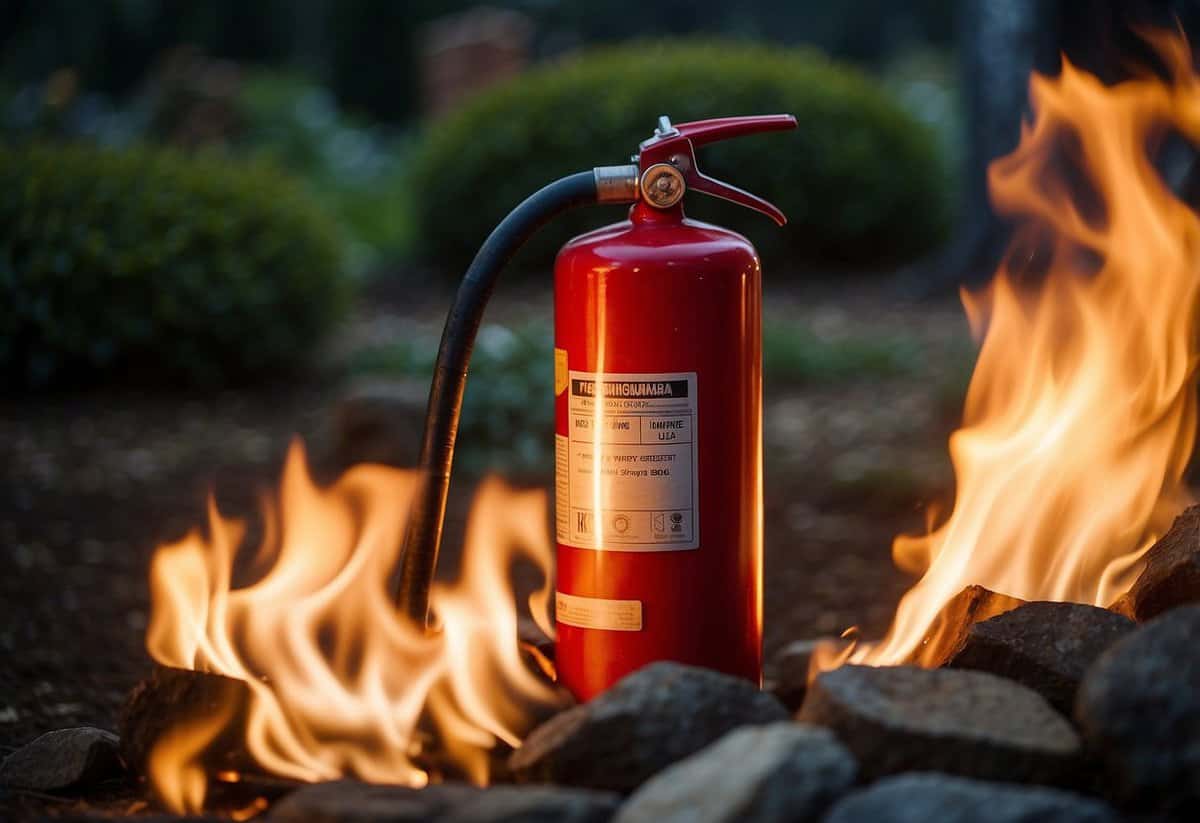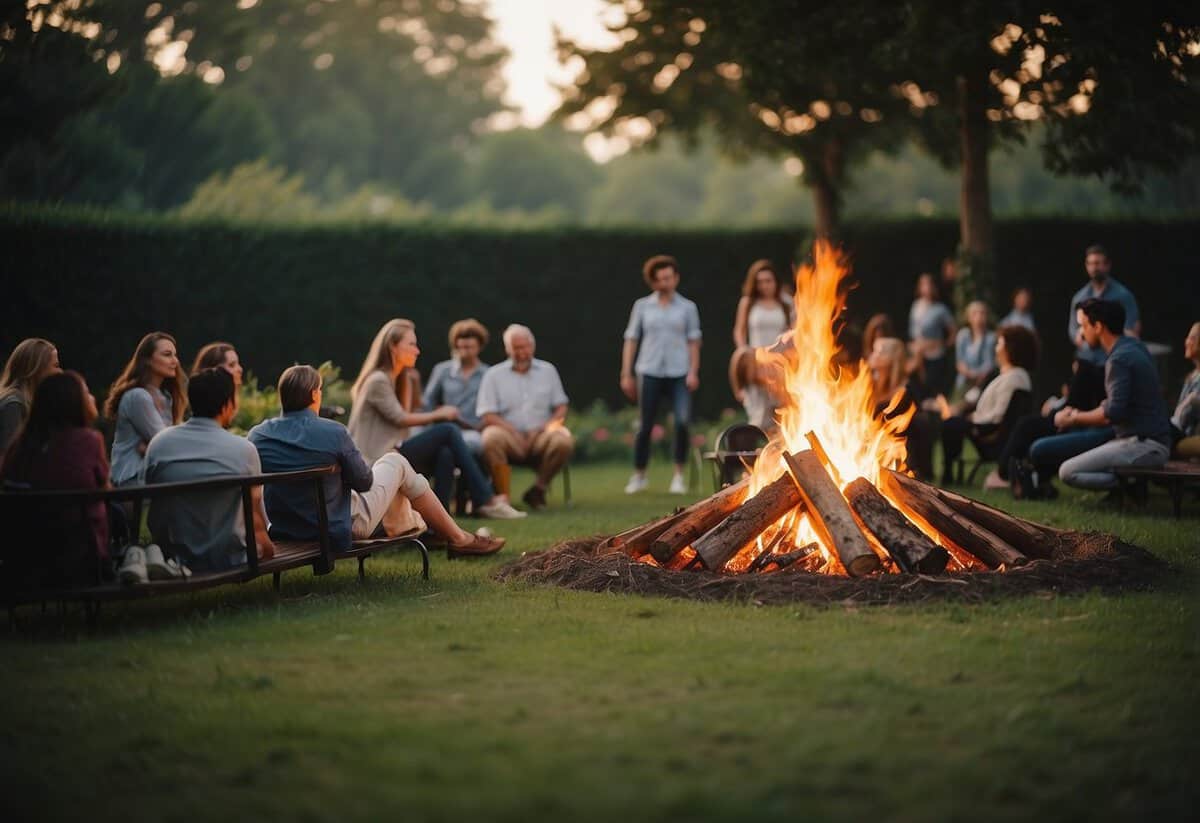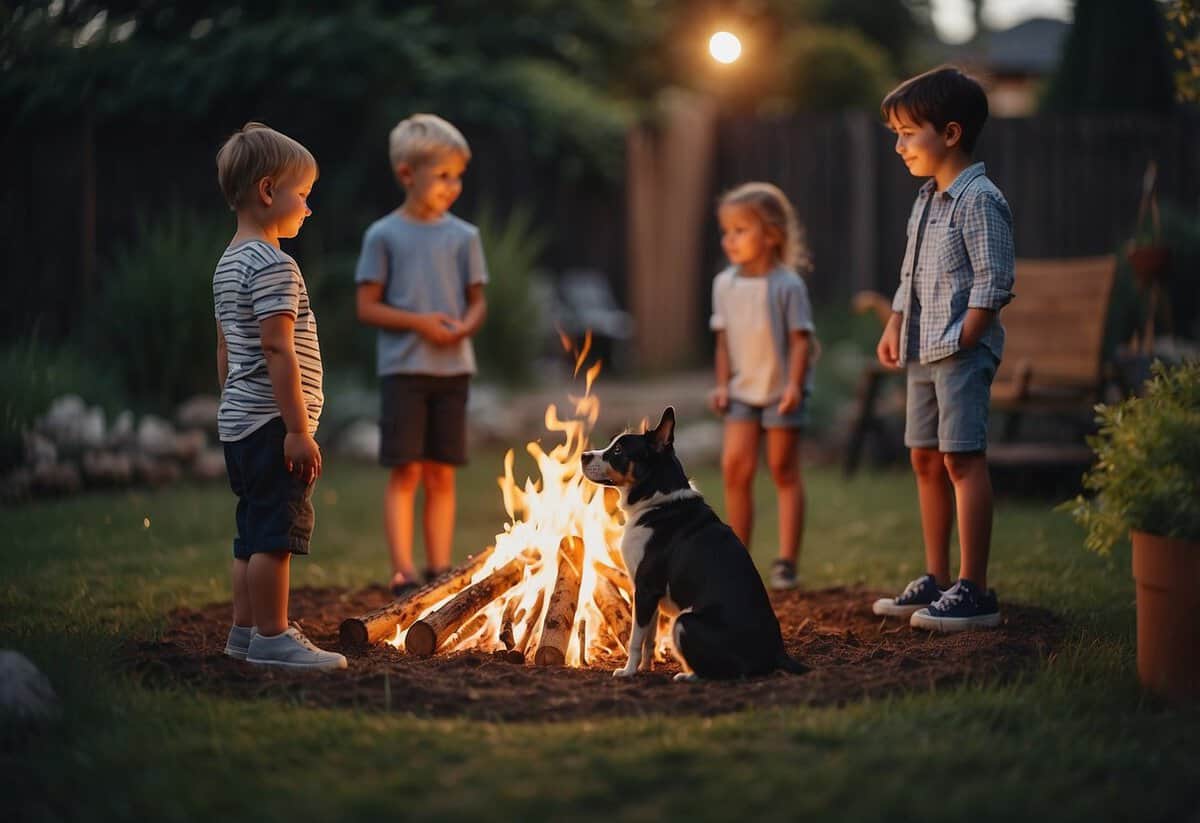Garden Bonfire Tips: Enjoy Safe and Cozy Evenings
Gathering around a bonfire in your garden can be a wonderful way to spend an evening with friends and family. The crackling fire, the warmth, and the chance to roast marshmallows create a cozy atmosphere right in your backyard.

Planning a safe and enjoyable garden bonfire requires some preparation and knowledge of local regulations. With the right tips, you can ensure that your bonfire is both fun and safe for everyone involved.
1) Safety First

When planning a garden bonfire, make sure to keep safety in mind. Always keep a fire extinguisher or a bucket of water nearby in case of emergencies.
Build your bonfire at least 10 feet away from any structures, trees, or outdoor furniture. Avoid using gasoline or lighter fluid to start the fire. Instead, use dry, seasoned wood. Check local regulations to ensure you’re allowed to have a bonfire.
Create a perimeter using sand or chicken wire to keep small animals safe, especially if you’re building the fire in advance. Finally, never leave the fire unattended.
2) Choose the Right Spot

Picking the perfect spot for your bonfire is key. You want a place that is safe and away from any buildings or trees.
Make sure the area is clear of dry grass or leaves. This helps prevent any accidental fires.
A gravel or dirt patch is ideal. This will keep your fire contained and manageable.
Having plenty of space around the fire is important. This will ensure that you and your guests can enjoy the bonfire safely. For more detailed guidance, visit how to build a great bonfire.
3) Check the Weather

Before setting up your bonfire, always check the weather. It’s important to avoid starting a fire in extremely windy conditions. A strong breeze can blow sparks onto nearby surfaces or even people.
Make sure there’s no rain in the forecast either. Nobody wants a soggy bonfire party. Checking the weather ensures safety and comfort for everyone.
4) Gather Dry Wood

Your bonfire will burn best with dry wood. Look for seasoned wood or wood that has been dried for at least six months.
Avoid green wood, which is freshly cut and still retains moisture. This type of wood can cause more smoke and be harder to keep burning.
Hardwoods like oak or maple are great choices because they burn longer and hotter.
Make sure your wood is split into manageable pieces, about the size of your forearm. This helps the fire burn evenly.
Stack the wood in a dry place before the bonfire to keep it ready to use.
5) Have a Fire Extinguisher Handy

Keeping a fire extinguisher nearby when you have a bonfire in your garden is crucial for safety. It helps you manage any sudden fire spread before it gets out of control.
Always position the extinguisher in an easily accessible spot. This ensures you can quickly grab it in case of an emergency.
If possible, also keep a bucket of sand or a garden hose close by for additional fire-fighting options.
6) Keep a Bucket of Water Nearby

When you have a bonfire, always keep a bucket of water close by. This helps you quickly put out any unexpected flames.
If a bucket of water isn’t handy, having a garden hose nearby can also work well. It’s easy to access and can put out fires fast.
Sand can be another option if water isn’t available. Just pour it over the fire to smother the flames.
7) Use Fire Starters

Using fire starters makes lighting your bonfire much easier. There are many options to choose from, including homemade and store-bought varieties. For a simple DIY option, shred recycled paper, place it in cupcake containers, and pour melted wax over it.
You can also buy fire starters at outdoor stores. Just place them under your kindling, light them, and your bonfire will be blazing in no time. Fire starters ensure a quick and safe start to your evening.
8) Create a Fire Pit

Building a fire pit in your garden can make it the perfect spot for gatherings. Clear the site by removing any grass or weeds. Dig a circular hole that is about four feet in diameter and one foot deep to create a good base for your fire pit.
Next, use cement bricks or stones to form walls around the pit. Leave small gaps between them to allow air to flow, which helps the fire burn better. You can also place sand at the bottom to improve drainage and prevent fires from spreading.
For a unique touch, consider using a metal or terracotta planter as your fire pit base. This makes it easier to move if needed. Ready to get started? Build your cozy fire pit and enjoy your garden even more!
9) Avoid Overcrowding

When planning your garden bonfire, make sure there’s plenty of space for everyone. Crowded spaces can be unsafe, especially around open flames.
Set up seating a safe distance from the fire. This gives everyone a good view while staying safe.
Keep pathways clear of clutter to avoid trips and falls. This helps people move around easily and safely.
10) Supervise Children and Pets

Always keep an eye on children when you have a bonfire. Teach them about the dangers of fire and create clear boundaries they must stay within.
Pets should stay indoors or in a safe area away from the fire. The loud noises and bright lights can stress them out.
Assign someone to watch over the fire at all times to ensure safety for everyone involved.
Choosing The Right Location

Selecting the ideal spot for your garden bonfire is key for ensuring safety and maximizing enjoyment. Focus on safety considerations, the distance from structures, and the wind direction.
Safety Considerations
Safety should be your top priority when picking a bonfire spot. Choose a level area with no overhanging branches or nearby combustible materials. Keep a bucket of water or a hose nearby in case of emergencies. Always check local regulations to make sure you’re allowed to have a bonfire in your desired location.
Having a clear, open space around the bonfire is essential to prevent accidents. Create a fire ring using stones or bricks to keep the flames contained. Make sure there is an adult who can oversee the bonfire at all times to maintain a safe environment.
Proximity to Structures
When setting up your bonfire, distance is crucial. Ensure the bonfire is at least 25 feet away from your house, shed, or any other building. This reduces the risk of the fire spreading. Also, keep the bonfire away from fences and any flammable items like wooden patios or overhanging roofs.
Consider the layout of your garden. Check for underground utilities and make sure there’s a clear path for guests to move around safely. Avoid setting the fire near storage for flammable liquids or gas, as these can pose serious hazards.
Wind Direction
Wind direction can heavily impact your bonfire experience. Before lighting the fire, check the wind direction to ensure that smoke won’t blow towards your home or seated guests. A steady, gentle breeze is best for controlling the smoke and helping the fire burn evenly.
Avoid lighting a bonfire on very windy days. Strong gusts can spread embers and increase the risk of spreading the fire. Find a spot that is somewhat sheltered from high winds, but still has enough airflow to keep the fire burning well. Monitoring local weather conditions can help you choose the best day and location for your bonfire.
Firewood And Fuel Options

Choosing the right type of wood and avoiding harmful fuels will enhance your bonfire experience while ensuring safety and enjoyment. Here’s what you need to know about selecting the best firewood and avoiding toxic fumes.
Best Types of Wood to Use
For the best burn, use hardwoods like oak, hickory, and maple. These woods burn longer and produce more heat. Oak, for example, is dense and burns steadily, giving you a warm, lasting fire.
Softwoods like pine and fir ignite quickly but burn out faster. They are great for kindling but not ideal for the main fuel once your bonfire is going.
Additionally, make sure your wood is well-seasoned. Green wood or wood that hasn’t dried properly can be hard to light and produce a lot of smoke. Seasoned wood should have a moisture content of around 20%.
Avoiding Toxic Fumes
Never use treated or painted wood in your bonfire. These materials contain chemicals that release toxic fumes when burned. Avoid using plywood or particleboard for the same reason.
Burning household garbage should also be avoided. Items like plastic, rubber, and coated paper can emit harmful substances.
Stick to natural materials. You can use newspaper or dry leaves for starting your fire, but avoid coated papers and glossy magazines. They’re not suitable for burning and can release unwanted chemicals.
For lighting the fire, avoid using gasoline or lighter fluid. Instead, use natural fire starters like dryer lint, cotton balls soaked in petroleum jelly, or commercial fire starters designed for this purpose.
Fire Safety Measures

To enjoy a safe bonfire in your garden, it’s crucial to have proper equipment on hand and know how to extinguish the fire properly.
Essential Fire Safety Equipment
Having the right equipment nearby can prevent a small fire from becoming a big problem. A fire extinguisher is a must-have. It’s also helpful to have a bucket of water or a garden hose within reach. Keep a supply of sand on hand as it can help to control the fire’s heat.
Make sure you have a fire blanket. This can smother small flames quickly. Equally important is a first aid kit. Accidents can happen, so being prepared to treat minor burns or injuries is wise.
Child and pet safety gates or barriers are essential to keep them away from the bonfire. Lastly, keep your mobile phone nearby to call for emergency help if needed.
Steps to Extinguish a Fire
Knowing how to properly put out your bonfire ensures that it doesn’t reignite. Start by dousing the flames with water. Pouring water over the fire should be done slowly and evenly.
Next, stir the ashes with a shovel or stick. This helps ensure that any remaining embers are cooled off. After stirring, apply more water to any hot spots you find.
If water isn’t available, use sand or dirt to cover the fire, suffocating the flames. Remove any large debris that might reignite. Finally, wait and watch for a while to ensure the fire is completely out before leaving the area.







